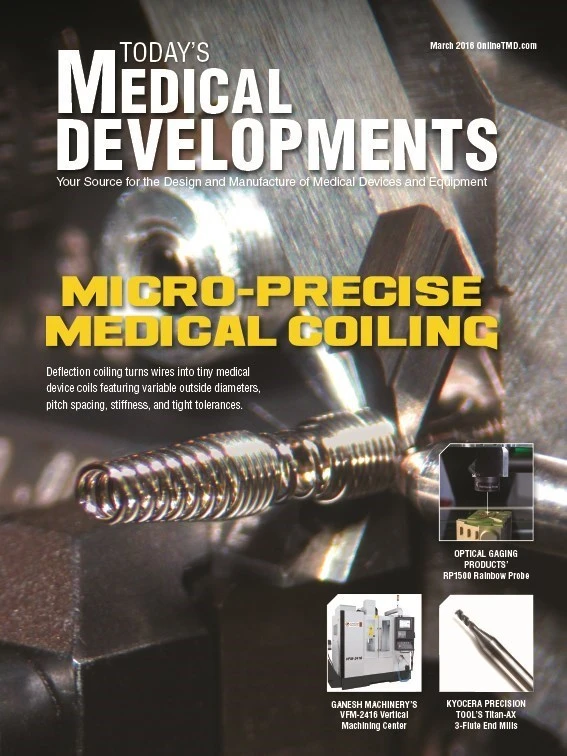
Acoustic imaging resolution used in medical diagnostics could more than double thanks to a metamaterial developed by researchers at North Carolina State University (NC State) and Duke University. The paper-and-aluminum metamaterial can focus acoustic waves and control the angles at which sound passes through it. Improving acoustic imaging could benefit the medical device industry and structural integrity testing of everything from airplanes to bridges.
“This metamaterial is something that we’ve known is theoretically possible, but no one had actually made it before,” says Yun Jing, an assistant professor of mechanical and aerospace engineering at NC State and corresponding author of a paper describing the work.
Metamaterials are simply materials that have been engineered to exhibit properties that are not found in nature. In this case, the structural design of the metamaterial gives it qualities that make it hyperbolic – interactive with acoustic waves in two different ways. From one direction, the metamaterial exhibits a positive density and interacts with acoustic waves normally – just like air. From a perpendicular direction, the metamaterial exhibits a negative density – effectively making acoustic waves bend at angles that are the exact opposite of what basic physics would tell you to expect. The practical effect of this is that the metamaterial has some very useful applications.
For one thing, it can improve acoustic imaging. Standard, acoustic imaging can’t achieve image resolution smaller than half of a sound’s wavelength. For example, an acoustic wave of 100kHz traveling through air has a wavelength of 3.4mm – so traditional imaging couldn’t achieve image resolution smaller than 1.7mm.
“But our metamaterial improves on that,” says Chen Shen, a Ph.D. student at NC State and lead author of the paper. “By placing the metamaterial between the imaging device and the object being imaged, we were able to more than double the resolution of the acoustic imaging – from one-half the sound’s wavelength to greater than one-fifth.”
The metamaterial can also focus acoustic waves, making it a flexible tool.
“Medical personnel and structural engineers sometimes need to focus sound for imaging or therapeutic purposes,” Jing says. “Our metamaterial can do that, or it can be used to improve resolution. There are few tools out there that can do both.”
In addition, the metamaterial gives researchers more control over the angle at which acoustic waves can pass through it.
“The metamaterial could be designed to block sound from most angles, leaving only a small opening for sound to pass through, which might be useful for microphones. Or you could leave it wide open – it’s extremely flexible,” Shen says.
Right now, the prototype metamaterial is approximately 30cm2, and is effective for sounds between 1kHz and 2.5kHz.
“Our next steps are to make the structure much smaller, and to make it operate at higher frequencies,” Jing says.
North Carolina State University
Duke University

Explore the March 2016 Issue
Check out more from this issue and find your next story to read.
Latest from Today's Medical Developments
- Teleflex sells acute care and urology businesses for $2.03 billion
- HANNOVER MESSE: Where research and manufacturing meet
- What’s next for the design and manufacturing industry in 2026?
- Arcline to sell Medical Manufacturing Technologies to Perimeter Solutions
- Decline in German machine tool orders bottoming out
- Analysis, trends, and forecasts for the future of additive manufacturing
- BlueForge Alliance Webinar Series Part III: Integrate Nationally, Catalyze Locally
- Robot orders accelerate in Q3





